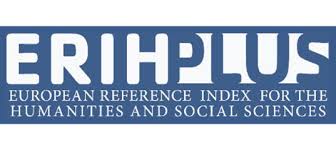LGBTQIA+ asylum: From recognition to data provision in Brazil
DOI:
https://doi.org/10.35295/osls.iisl/0000-0000-0000-1369Keywords:
LGBTQIA , asylum, the Yogyakarta Principles, UNCHR, human rightsAbstract
LGBTQIA+ asylum is a reality in Brazil, although it is not expressly included in the convention. Starting with historical research, the article shows how LGBTQIA+ asylum has been consolidated in International Law and, specifically in Brazil, as a country where there are also cases of homophobia and transphobia, LGBTQIA+ asylum is guaranteed, even if the information requested from the Federal Police and the National Committee for Refugees from Brazil do not currently indicate whether the number of concessions specifically for these groups has increased or decreased. Addressing the cliquet effect, it demonstrates the impossibility of retroaction in terms of Human Rights, preventing the denial of the granting of asylum in Brazil to this people, which is the distinctive focus of the research. The deductive method, combined with qualitative analysis of primary sources, such as official documents, and bibliographical sources were used to achieve the results.
Downloads
Metrics
Global Statistics ℹ️
|
921
Views
|
1033
Downloads
|
|
1954
Total
|
|
References
ACNUR and CONARE, 2018. Perfil das solicitações de refúgio relacionadas à orientação sexual e à identidade de gênero (OSIG): Brasil 2010–2018 [online]. Available from: https://datastudio.google.com/u/0/reporting/11eabzin2AXUDzK6_BMRmo-bAIL8rrYcY/page/1KIU [Accessed 2 September 2021].
ACNUR, 2017. Cartilha informativa sobre a proteção de pessoas refugiadas e solicitantes de refúgio LGBTI [online]. Brasília. Available from: https://www.acnur.org/fileadmin/Documentos/portugues/Publicacoes/2017/Cartilha_Refugiados_LGBTI.pdf [Accessed 2 September 2021].
Alamino, F.N.P., and Del Vecchio, V.A., 2018. Os Princípios de Yogyakarta e a proteção de direitos fundamentais das minorias de orientação sexual e de identidade de gênero. Revista da Faculdade de Direito, Universidade de São Paulo [online], v. 113, p. 645–668. Available from: https://doi.org/10.11606/issn.2318-8235.v113i0p645-668 [Accessed 17 December 2021]. DOI: https://doi.org/10.11606/issn.2318-8235.v113i0p645-668
ANSA, 2019. Trans brasileira obtém status de refugiada na Itália. IstoÉ. Mundo [online], Bolonha, 15 May. Available from: https://istoe.com.br/trans-brasileira-obtem-status-de-refugiada-na-italia/ [Accessed 1 March 2022].
Barros, C.J., 2019. Com medo de ameaças, Jean Wyllys, do PSOL, desiste de mandato e deixa o Brasil. Folha de São Paulo [online], 24 January. Available from: https://www1.folha.uol.com.br/poder/2019/01/com-medo-de-ameacas-jean-wyllys-do-psol-desiste-de-mandato-e-deixa-o-brasil.shtml [Accessed 1 March 2022].
Benevides, B.G., 2018. Dicas de Segurança [online]. October. RENOSP. Available from: http://download.uol.com.br/noticias/2018/dicas-de-seguranca-para-pessoas-lgbtis.pdf [Accessed 1 March 2022].
Bierbach, M., 2020. Queer refugees: LGBT+ organizations struggle to provide support amid coronavirus. Infomigrants [online], 27 May. Available from: https://www.infomigrants.net/en/post/24999/queer-refugees-lgbt+-organizations-struggle-to-provide-support-amid-coronavirus [Accessed 5 September 2021].
Controladoria-Geral da União, no date. Fala.BR - Plataforma Integrada de Ouvidoria e Acesso à Informação [online]. Available from: https://falabr.cgu.gov.br/publico/
Manifestacao/SelecionarTipoManifestacao.aspx?ReturnUrl=%2f [Accessed 14 September 2021].
Convenção relativa ao estatuto dos refugiados, 1951 [online]. Available from: https://www.acnur.org/fileadmin/Documentos/portugues/BDL/Convencao_relativa_ao_Estatuto_dos_Refugiados.pdf [Accessed 8 September 2021].
Convention relative au statut international des réfugiés, 1933. Genève, le 28 octobre 1933 [online]. Available from: https://dl.wdl.org/11580/service/11580.pdf [Accessed 9 September 2021].
Cowper-Smith, Y., Su, Y., and Valiquette, T., 2021. Masks are for sissies: the story of LGBTQI+ asylum seekers in Brazil during COVID-19. Journal of Gender Studies, 31(6). DOI: https://doi.org/10.1080/09589236.2021.1949970
Garcia, J., 2012. Cresce número de brasileiros gays no exterior que pedem asilo alegando homofobia. UOL Notícias, Cotidiano [online], 4 April. Available from: https://noticias.uol.com.br/cotidiano/ultimas-noticias/2012/04/04/cresce-numero-de-brasileiros-gays-no-exterior-que-pedem-asilo-alegando-homofobia.htm [Accessed 1 March 2022].
Gorisch, P., and Mendes, V., 2016. O Brasil como Estado de origem para refugiados LGBTI: contradição entre âmbitos interno e externo. Anais do 3o Seminário de Relações Internacionais da Associação Brasileira de Relações Internacionais – ABRI. Florianópolis/SC [online]. Available from: http://www.seminario2016.abri.org.br/
resources/anais/23/1474655631_ARQUIVO_Brasilcomoestadodeorigemedeasilopararefugiadoslgbti.pdf [Accessed 1 March 2022].
Graminha, P., 2018. Relatos de 3 LGBTs que adiaram voltar ao Brasil com medo de ataques homofóbicos. UOL Notícias [online], 21 November. Available from: https://noticias.uol.com.br/internacional/ultimas-noticias/2018/11/21/brasileiros-lgbt-fora-do-brasil-medo-eleicoes-bolsonaro-violencia-nao-pensam-em-voltar.htm [Accessed 1 March 2022].
ILGA, no date. About us [online]. Available from: https://ilga.org/about-us [Accessed 2 September 2021].
Jubilut, L.L., 2007. O Direito Internacional dos Refugiados e sua Aplicação no Ordenamento Jurídico Brasileiro. São Paulo: Método.
Lesben- und Schwulenverband in Deutschland (LSVD), 2022 (last updated). Material [online]. Available from: https://www.queer-refugees.de/material-2/ [Accessed 5 September 2021].
Lesser, J., 2015. A invenção da brasilidade: identidade nacional, etnicidade e políticas de imigração. Trans.: P. de Queiroz Carvalho Zimbres. 1st ed. São Paulo: Unesp.
Mantovani, F., 2018. Perseguidos, LGBT recebem refúgio no Brasil. Folha de São Paulo [online], 28 November. Available from: https://www1.folha.uol.com.br/mundo/
/11/perseguidos-lgbts-africanos-recebem-refugio-no-brasil.shtml [Accessed 2 September 2021].
Martins, T., 2022. Conheça as quarto mulheres trans eleitas deputadas em 2022. Correio braziliense [online], 4 October. Available from: https://www.correiobraziliense.
com.br/politica/2022/10/5041807-conheca-as-quatro-mulheres-trans-eleitas-deputadas-em-2022.html [Accessed 18 November 2022].
Mendos, L.R., 2019. State-sponsored homophobia [online]. 13th ed. Geneva: ILGA. Available from: https://ilga.org/downloads/ILGA_State_Sponsored
_Homophobia_2019_light.pdf [Accessed 4 September 2021].
Mendos, L.R., et al., 2020. State-sponsored homophobia: global legislation overview [online]. Updated ed. Available from: https://ilga.org/downloads/ILGA_World_State_
Sponsored_Homophobia_report_global_legislation_overview_update_December_2020.pdf [Accessed 4 September 2021].
Pinknews, 2017. Number of LGBT asylum seekers rises sharply. Pinknews. Community [online], 18 January. Available from: https://www.pinknews.co.uk/2017/01/18/
number-of-lgbt-asylum-seekers-rises-sharply/ [Accessed 5 September 2021].
Prestes, M., 2018. Abrigo para refugiados venezuelanos LGBTI é inaugurado em Manaus. Folha de São Paulo [online], 5 November. Available from: https://www1.folha.uol.com.br/mundo/2018/11/abrigo-para-refugiados-venezuelanos-lgbti-e-inaugurado-em-manaus.shtml [Accessed 2 September 2021].
Ramos, A.C., 2016. Teoria geral dos direitos humanos na ordem internacional. 6th ed. São Paulo: Saraiva.
The Buggery act, 1533 [online]. British Library, Collection items. Available from: https://www.bl.uk/collection-items/the-buggery-act-1533 [Accessed 4 September 2021].
The Yogyakarta principles plus 10: additional principles and state obligations on the application of international human rights law in relation to sexual orientation, gender identity, gender expression and sex characteristics to complement the Yogyakarta principles [online]. Geneva, 10 November 2017. Available from: https://yogyakartaprinciples.org/wp-content/uploads/2017/
/A5_yogyakartaWEB-2.pdf [Accessed 15 December 2021].
The Yogyakarta Principles: principles on the application of international human rights law in relation to sexual orientation and gender identity [online]. March 2007. Available from: http://yogyakartaprinciples.org/wp-content/uploads/
/08/principles_en.pdf [Accessed 15 December 2021].
UNHCR, 2019. Handbook on procedures and criteria for determining refugee status and guidelines on international protection under the 1951 convention and the 1967 protocol relating to the status of refugees (HCR/1P/4/ENG/REV. 4) [online]. February. Geneva. Available from: https://www.asylumlawdatabase.eu/sites/default/files/
aldfiles/UNHCR%20Handbook%20-%20Feb%202019.pdf [Accessed 20 November 2022].
Zappulla, A., 2018. Forgotten twice: the untold story of LGBT refugees [online]. 23–26 January, World Economic Forum Annual Meeting. Davos-Klosters. Available from: https://www.weforum.org/agenda/2018/01/forgotten-twice-lgbt-refugees/ [Accessed 5 September 2021].
Published
How to Cite
Issue
Section
License
Copyright (c) 2022 Felipe Nicolau Pimentel Alamino, Izabela Zonato Villas Boas

This work is licensed under a Creative Commons Attribution-NonCommercial-NoDerivatives 4.0 International License.
OSLS strictly respects intellectual property rights and it is our policy that the author retains copyright, and articles are made available under a Creative Commons licence. The Creative Commons Non-Commercial Attribution No-Derivatives licence is our default licence and it regulates how others can use your work. Further details available at https://creativecommons.org/licenses/by-nc-nd/4.0 If this is not acceptable to you, please contact us.
The non-exclusive permission you grant to us includes the rights to disseminate the bibliographic details of the article, including the abstract supplied by you, and to authorise others, including bibliographic databases, indexing and contents alerting services, to copy and communicate these details.
For information on how to share and store your own article at each stage of production from submission to final publication, please read our Self-Archiving and Sharing policy.
The Copyright Notice showing the author and co-authors, and the Creative Commons license will be displayed on the article, and you must agree to this as part of the submission process. Please ensure that all co-authors are properly attributed and that they understand and accept these terms.






















